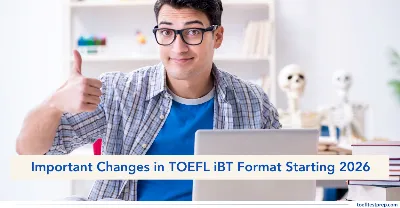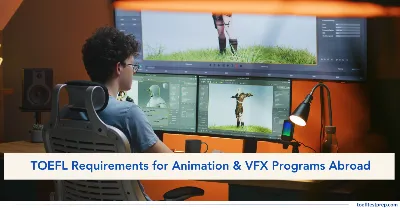Present Continuous Tense: Definition, Structure, Rule, Examples, Exercises

"The present continuous tense is used for actions happening now, temporary situations, or future plans. Learn its structure, rules, and examples to boost your English skills."
Key Highlights
The present continuous tense is one of the most commonly used tenses in English, helping us talk about actions that are happening at the moment or ongoing. Let’s learn about Present Continuous Tense: Definition, Structure, Rules, Examples, and Exercises in a simple and clear way.
Check out - How to Improve TOEFL iBT® Reading Skills
What is the Present Continuous Tense?
The present continuous tense is one of the most commonly used tenses in English, helping us talk about actions that are happening at the moment, ongoing, or planned for the near future. It conveys immediacy and relevance, allowing speakers to highlight actions in progress or those arranged to happen soon. For example, it helps describe a current activity, such as "She is reading a book," or a planned event, like "We are visiting the museum tomorrow." This adaptability makes it a crucial element for precise and impactful communication.
Structure of the Present Continuous Tense
Here’s the simple structure of the present continuous tense:
|
Subject |
Auxiliary Verb (to be) |
Base Verb + "-ing" Form |
Example |
|
I |
am |
reading |
I am reading "Norwegian Wood." |
|
You |
are |
travelling |
You are travelling to an art museum. |
|
He/She/It |
is |
hiking |
She is hiking solo in the mountains. |
|
We |
are |
gazing |
We are gazing at the starry night. |
|
They |
are |
enjoying |
They are enjoying the art exhibition. |
Check out - Essential Grammar Rules and Tips for TOEFL iBT® Exam
Rules for Using the Present Continuous Tense
Here are the essential rules for using the present continuous tense, from describing ongoing actions to expressing future plans:
1. Ongoing Actions: Use it to describe actions happening at the moment.
-
I am reading a Murakami novel right now.
2. Temporary Situations: Use it for actions happening temporarily.
-
He is staying at a museum hotel for a week.
3. Future Plans: Use it to describe plans or arrangements.
-
We are hiking to the top of the mountain tomorrow.
4. Repeated Actions: Use it for habits or actions that are annoying (with "always").
-
She is always talking about the next art exhibit.
5. Dynamic Verbs Only: Only use it with verbs that show action or change (not state verbs like "know," "believe," or "love").
Examples of Present Continuous Tense
Here are some examples of the present continuous tense in action, showcasing how it describes ongoing activities, temporary situations, and future plans.
-
I am reading "Kafka on the Shore" by Haruki Murakami.
-
They are visiting a museum filled with modern art installations.
-
We are admiring the starry night sky while camping.
-
She is hiking solo through the Rocky Mountains.
-
He is sketching a portrait in his art class.
Check out - 10 Common TOEFL Mistakes You Must Avoid
Fun Exercises
Here are some fun exercises to help you practice the present continuous tense, from filling in the blanks to correcting sentences and creating your own examples:
1. Fill in the blanks:
1. I ______ (read) "The Wind-Up Bird Chronicle."
2. They ______ (travel) to an art gallery this weekend.
3. She ______ (paint) a starry night-inspired masterpiece.
4. We ______ (plan) our next solo hiking adventure.
5. He ______ (explore) a museum in Paris.
2. Correct the sentences:
1. She are reading a book.
2. They is hiking tomorrow.
3. I am enjoy the art exhibition.
4. He are planning a trip to the mountains.
5. We is gazing at the stars tonight.
3. Create sentences:
Use these prompts to write your own sentences in the present continuous tense:
-
Reading a Murakami book
-
Visiting a museum
-
Gazing at the stars
-
Hiking solo
-
Planning a trip
Answer Key
1. Fill in the blanks:
-
I am reading "The Wind-Up Bird Chronicle."
-
They are traveling to an art gallery this weekend.
-
She is painting a starry night-inspired masterpiece.
-
We are planning our next solo hiking adventure.
-
He is exploring a museum in Paris.
2. Correct the sentences:
-
She is reading a book.
-
They are hiking tomorrow.
-
I am enjoying the art exhibition.
-
He is planning a trip to the mountains.
-
We are gazing at the stars tonight.
3. Create sentences:
-
I am reading a Murakami book right now.
-
They are visiting a museum this afternoon.
-
We are gazing at the stars in the countryside tonight.
-
He is embarking on a solo hiking adventure this weekend.
-
He is planning a trip to the art gallery next month.
I hope this blog on Present Continuous Tense: Definition, Structure, Rules, Examples, and Exercises was helpful for you. Keep practicing with the examples and exercises to strengthen your understanding. Happy learning!
Also Read:
Featured Articles

TOEFL Format Undergoing Significant Changes in January 2026
The TOEFL iBT format is changing in January 2026 with a smarter structure and easier scoring. Here’s everything you need to know to stay ahead.
August 06, 2025
Minimum TOEFL Score Requirement for South Korea Student Visa
Understand the TOEFL requirement for a South Korea student visa and English-taught programs, and prepare your application for success.
September 14, 2025
Minimum TOEFL Score for Study Visa in Poland
Understand TOEFL score requirements for securing a Poland student visa and joining top universities offering English-taught programs.
September 14, 2025
TOEFL Requirements for Animation & VFX Programs Abroad
Discover TOEFL score requirements for studying Animation and VFX abroad, and learn how to meet them for top creative universities.
September 14, 2025